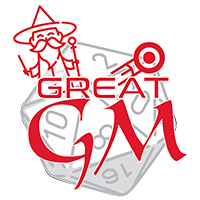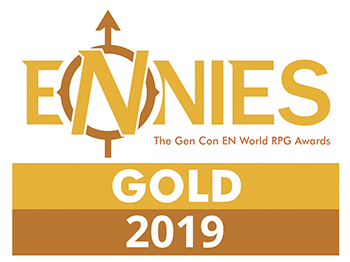Lylthanair
Founded in 1033, this dwarven mining stronghold has etched its identity into the very heart of the mountains it calls home. Carved into the mountainside with meticulous precision, the city's terraced architecture cascades down in a harmonious blend of hewn stone and natural caverns. Lylthanair's grandeur lies not only in its vast mining operations, extracting precious iron, silver, and gemstones, but also in the artistry of its jewelers who craft exquisite pieces from the city's bounty. The Mining Guild headquarters, adorned with intricate reliefs, serves as the beating heart of Lylthanair, overseeing the industrious endeavors that have shaped the city's legacy. The Jeweler's Quarter, with its gemstone-adorned facades, and the grand Forgeheart Plaza, resonating with the rhythmic echoes of hammer against anvil, stand as vibrant testimonies to the city's commitment to both industry and craftsmanship. Amidst the terraced structures and bustling forges, Lylthanair exudes a timeless aura, a dwarven jewel gleaming in the embrace of the formidable Devil's Maw.
Demographics
Dwarves:
Dwarves: 6,500 (83.3%)
Dwarven Miners: 4,800
Dwarven Craftsmen: 1,200
Dwarven Families: 500
Humans:
Humans: 1,000 (12.8%)
Human Traders and Merchants: 600
Human Artisans and Craftsmen: 300
Human Families: 100
Other Races:
Goliaths: 200 (2.6%)
Goliath Laborers and Miners: 120
Goliath Adventurers and Wanderers: 80
Genasi: 100 (1.3%)
Fire Genasi Artisans: 40
Water Genasi Scholars: 30
Air and Earth Genasi Residents: 30
Note:
The demographic breakdown provides a general overview and the numbers are approximate.
Dwarves make up the majority of the population, reflecting the city's strong dwarven heritage and expertise in mining and craftsmanship.
Humans form the largest minority, often engaging in trade, commerce, and various artisanal activities.
Goliaths and Genasi, while present in smaller numbers, contribute to the city's diversity, bringing unique skills and perspectives to Lylthanair.
The city's demographics showcase a harmonious blend of different races working together for the prosperity of the community.
Dwarves: 6,500 (83.3%)
Dwarven Miners: 4,800
Dwarven Craftsmen: 1,200
Dwarven Families: 500
Humans:
Humans: 1,000 (12.8%)
Human Traders and Merchants: 600
Human Artisans and Craftsmen: 300
Human Families: 100
Other Races:
Goliaths: 200 (2.6%)
Goliath Laborers and Miners: 120
Goliath Adventurers and Wanderers: 80
Genasi: 100 (1.3%)
Fire Genasi Artisans: 40
Water Genasi Scholars: 30
Air and Earth Genasi Residents: 30
Note:
The demographic breakdown provides a general overview and the numbers are approximate.
Dwarves make up the majority of the population, reflecting the city's strong dwarven heritage and expertise in mining and craftsmanship.
Humans form the largest minority, often engaging in trade, commerce, and various artisanal activities.
Goliaths and Genasi, while present in smaller numbers, contribute to the city's diversity, bringing unique skills and perspectives to Lylthanair.
The city's demographics showcase a harmonious blend of different races working together for the prosperity of the community.
Industry & Trade
Mining and Ore Extraction:
Industry: Lylthanair's primary industry revolves around mining and ore extraction. The city's skilled miners delve into the heart of The Devil's Maw to extract high-quality iron, silver, and gemstones.
Exports: The main exports include processed iron and silver, as well as raw gemstones. These materials are highly sought after for crafting weapons, armor, and exquisite jewelry.
Jewelry Crafting:
Industry: The Jeweler's Quarter is the epicenter of Lylthanair's jewelry crafting industry. Artisans meticulously craft jewelry from the city's gemstone bounty, producing intricate and valuable pieces.
Exports: Lylthanair's exquisite jewelry is a coveted export, traded with other cities and regions. The craftsmanship and uniqueness of these pieces attract collectors and buyers from far and wide.
Main imports:
Food
Frostwood
Infrastructure
Structures:
Hewn Stone Facades:
The exterior of many buildings features hewn stone facades, meticulously crafted from the mountain's own bedrock. These facades display intricate reliefs and carvings, depicting scenes of dwarven history, mining endeavors, and symbols of prosperity.
Terraced Architecture:
Lylthanair follows a terraced architectural layout, with structures built into the mountainside in a tiered fashion. Each level houses a combination of residential areas, crafting workshops, and communal spaces. This design maximizes space while providing stunning views of the surrounding mountainous landscape.
Mining Guild Headquarters:
The central hub of Lylthanair is dominated by the Mining Guild headquarters, a grand structure carved deep into the heart of the mountain. The headquarters serves as both an administrative center and a symbol of the city's mining prowess. Intricate support pillars line the entrance, showcasing the architectural expertise in blending aesthetics with functionality.
Jeweler's Quarter:
Lylthanair boasts a dedicated Jeweler's Quarter where skilled artisans craft exquisite jewelry from the mined gemstones. Buildings in this area feature ornate facades adorned with gemstone mosaics, and the streets are lined with market stalls showcasing the city's finest creations.
The Forgeheart Plaza:
At the heart of the city lies the Forgeheart Plaza, a bustling center where blacksmiths and craftsmen forge metal into tools, weapons, and artistic creations. A massive forge, known as the Forgeheart, stands as a symbol of the city's industrial prowess.
Natural Springs and Gardens:
Throughout Lylthanair, natural springs and gardens have been incorporated into the architectural design. These serene areas provide a place for relaxation and reflection, breaking up the stony landscape with vibrant greenery and colorful flowers.
The Grand Archway:
The entrance to Lylthanair is marked by the Grand Archway, a monumental stone arch adorned with intricate carvings and inscriptions welcoming visitors to the city. This impressive structure serves as a testament to the dwarven commitment to craftsmanship and hospitality.
Dwarven Statues:
Dwarven statues, depicting legendary miners and craftsmen, are scattered throughout the city. These statues stand as a reminder of the city's rich history and the resilience of its people.
The Crystal Caverns:
A mesmerizing natural cavern filled with luminescent crystals, providing a breathtaking display of colors and serving as both a tourist attraction and a source of gemstones.
Districts
Ash Burrow - Low-Income Housing District:
To the right of The Jeweler's Quarter is Ash Burrow. It's where the folks who work in the mines live. The houses are simple, made of stone, and the narrow streets show a strong sense of community among the hardworking residents.
Jeweler's Quarter:
The Jeweler's Quarter is where the city's artists work with gemstones to make fancy jewelry. The buildings have pretty designs with gemstone decorations. When you walk through the streets, you'll see stalls selling the best jewelry in the city. It's not just a market; it's like a gallery of dwarven art.
Edge Row - Middle-Class Housing District:
Above The Jeweler's Quarter on the slopes is Edge Row, where the middle-class folks live. The houses are nice and have some decorations. It's a good place to live, close to the busy Forgeheart Plaza and the beautiful Jeweler's Quarter.
Azure Terrace - High Nobility Housing:
At the top of Lylthanair is Azure Terrace. The houses here are fancy, with blue roofs and pretty windows. The people who live here have been in the city for a long time and have a lot of money.
Forgeheart Plaza:
Forgeheart Plaza is the busy center of Lylthanair. Blacksmiths and craftsmen work here, making tools, weapons, and cool stuff. There's a big forge in the middle, and the plaza is always full of noise and activity. It's where the city shows off its hardworking spirit.
The Outskirts:
Outside the city walls is The Outskirts. It's a mix of scattered houses, inns, and stalls. Traveling traders and tourists stay here. It's like a taste of Lylthanair outside the main city, with different people and cultures mingling together.
History
Founding and Early Years (1033-1100):
Lylthanair, the illustrious dwarven mining town, was founded in the year 1033 deep within the heart of The Devil's Maw mountain range. The city was strategically positioned to take advantage of rich deposits of iron, silver, and precious gemstones that characterized the rugged landscape. Dwarven prospectors and miners flocked to Lylthanair, establishing it as a thriving hub for ore extraction and craftsmanship. The city's economy flourished, and it quickly became renowned for its expertise in both mining and jewelry crafting.
The Treaty of Unity (1100):
In 1100, following a period of successful growth, Lylthanair played a pivotal role in the signing of The Treaty of Unity. This historic agreement marked the establishment of the Frostholme region, bringing together diverse races under a unified banner. Lylthanair's mining expertise and wealth contributed significantly to the prosperity of the newly formed region.
Golden Age and Prosperity (1101-1420):
Lylthanair experienced a golden age of prosperity during this period. The city's mines were the primary source of high-quality iron, silver, and gemstones, which were in high demand across Frostholme and beyond. Dwarven craftsmen and artisans honed their skills in jewelry crafting, producing exquisite pieces that garnered acclaim throughout the region. Lylthanair's wealth and influence grew, solidifying its status as the second-largest dwarven stronghold.
Challenges and The Last Stand's Overtaking (1421):
In 1421, The Last Stand, another dwarven stronghold, overtook Lylthanair in size. This transition was marked by internal challenges within Lylthanair, including disputes over resource distribution, changing leadership dynamics, and increased competition from other mining towns. The Last Stand's rise was a wake-up call for Lylthanair, prompting a reassessment of governance and resource management.
Renewed Focus on Sustainability (1422-1463):
Determined to regain its former glory, Lylthanair underwent a period of renewal. City leaders implemented sustainable mining practices to address environmental concerns and ensure the longevity of the mines. New leadership emerged, emphasizing collaboration among the dwarven clans and fostering a sense of unity.
Economic Diversification (1425-1440):
Recognizing the need for economic diversification, Lylthanair expanded its expertise beyond traditional mining. The city invested in research and development, leading to advancements in jewelry crafting techniques. Lylthanair's artisans began creating intricate and magical pieces, attracting collectors and traders from far and wide.
Cultural Renaissance (1441-1463):
The period from 1441 to 1463 witnessed a cultural renaissance in Lylthanair. The city's halls echoed with the sounds of traditional dwarven songs and the clinking of hammers against anvils. Dwarven festivals celebrating mining achievements and craftsmanship became major regional events, drawing visitors from other strongholds.
Present Day (1463):
Lylthanair, though no longer the largest dwarven stronghold, has regained its reputation as a thriving center of mining and craftsmanship. With renewed focus on collaboration and cultural preservation, Lylthanair looks toward the future with optimism, poised to continue contributing to the prosperity of Frostholme.
Lylthanair, the illustrious dwarven mining town, was founded in the year 1033 deep within the heart of The Devil's Maw mountain range. The city was strategically positioned to take advantage of rich deposits of iron, silver, and precious gemstones that characterized the rugged landscape. Dwarven prospectors and miners flocked to Lylthanair, establishing it as a thriving hub for ore extraction and craftsmanship. The city's economy flourished, and it quickly became renowned for its expertise in both mining and jewelry crafting.
The Treaty of Unity (1100):
In 1100, following a period of successful growth, Lylthanair played a pivotal role in the signing of The Treaty of Unity. This historic agreement marked the establishment of the Frostholme region, bringing together diverse races under a unified banner. Lylthanair's mining expertise and wealth contributed significantly to the prosperity of the newly formed region.
Golden Age and Prosperity (1101-1420):
Lylthanair experienced a golden age of prosperity during this period. The city's mines were the primary source of high-quality iron, silver, and gemstones, which were in high demand across Frostholme and beyond. Dwarven craftsmen and artisans honed their skills in jewelry crafting, producing exquisite pieces that garnered acclaim throughout the region. Lylthanair's wealth and influence grew, solidifying its status as the second-largest dwarven stronghold.
Challenges and The Last Stand's Overtaking (1421):
In 1421, The Last Stand, another dwarven stronghold, overtook Lylthanair in size. This transition was marked by internal challenges within Lylthanair, including disputes over resource distribution, changing leadership dynamics, and increased competition from other mining towns. The Last Stand's rise was a wake-up call for Lylthanair, prompting a reassessment of governance and resource management.
Renewed Focus on Sustainability (1422-1463):
Determined to regain its former glory, Lylthanair underwent a period of renewal. City leaders implemented sustainable mining practices to address environmental concerns and ensure the longevity of the mines. New leadership emerged, emphasizing collaboration among the dwarven clans and fostering a sense of unity.
Economic Diversification (1425-1440):
Recognizing the need for economic diversification, Lylthanair expanded its expertise beyond traditional mining. The city invested in research and development, leading to advancements in jewelry crafting techniques. Lylthanair's artisans began creating intricate and magical pieces, attracting collectors and traders from far and wide.
Cultural Renaissance (1441-1463):
The period from 1441 to 1463 witnessed a cultural renaissance in Lylthanair. The city's halls echoed with the sounds of traditional dwarven songs and the clinking of hammers against anvils. Dwarven festivals celebrating mining achievements and craftsmanship became major regional events, drawing visitors from other strongholds.
Present Day (1463):
Lylthanair, though no longer the largest dwarven stronghold, has regained its reputation as a thriving center of mining and craftsmanship. With renewed focus on collaboration and cultural preservation, Lylthanair looks toward the future with optimism, poised to continue contributing to the prosperity of Frostholme.
Founding Date
1033
Population
7800
Location under
Owner/Ruler
Owning Organization
Characters in Location
Remove these ads. Join the Worldbuilders Guild









Comments